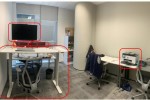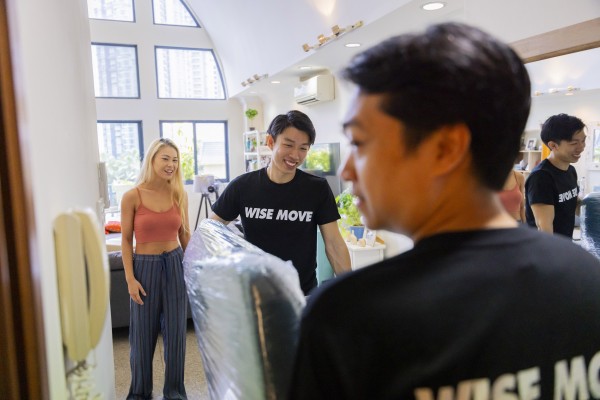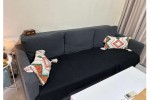How to Pack Your Dishes Hazard-Free When Moving - A Step-by-step Guide

In this guide, we’ll explore:
-
Step-by-step instructions to pack dishes like a pro
-
Expert techniques for safeguarding your valuables
-
Comprehensive advice on the ultimate packing materials
-
Smart tips on organizing and labeling for a smooth unpacking
If you're seeking an extra pair of hands to make this task even smoother, check out Wise Move. With their expertise in handling precious valuables delicately, Wise Move is a go-to solution for people seeking reliable yet cost-effective moving companies in Singapore.
Why is It Essential to Pack Dishes Properly For Moving?
No doubt, packing kitchen items like dishes, glasses, plates, and bowls is an essential aspect of the relocation process for several reasons. Here are a few major ones:
-
Prevents Damage: Dishes are often fragile. Proper packing minimizes the risk of chips, cracks, or complete breakage during the move.
-
Cost-Efficient: Good packing utilizes space optimally, potentially reducing the number of boxes needed and lowering transportation costs.
-
Ease of Unpacking: Organized and well-labeled boxes simplify the unpacking process, saving you time and effort when setting up your new kitchen.
-
Environmental Benefits: Using reusable or biodegradable packing materials helps minimize waste and reduces your environmental footprint.
-
Sentimental Value: Proper packing protects not just the monetary value of your dishes but also their sentimental worth, ensuring they reach your new home intact.
Essential Materials for Securing Your Dishware
Before you even start the packing process, it's crucial to gather all the necessary materials at hand. Here’s what you’ll need:
-
Sturdy Boxes: These specialized boxes, often known as "dish box" or "dish barrels," are extra-thick and provide superior protection compared to standard moving boxes.
-
Bubble Wrap: An essential cushioning material, bubble wrap provides a protective layer that helps to absorb any shocks or impacts. It is particularly useful for wrapping individual pieces of dishware.
-
Packing Paper: The crumpled papers are essential for wrapping dishes and providing an additional layer of protection between them. It's also useful for stuffing boxes to fill empty spaces and prevent items from shifting during the move.
-
Cardboard: Having some flexible, thin cardboard on hand allows you to create custom-sized separators that can be used between dishes, especially for items like plates and saucers.
-
Tape: Heavy-duty packing tape is essential for securing boxes. It's used for reinforcing the bottom of the boxes before packing and sealing them once they're full.
-
Permanent Marker: It will help you to label each box with the handling instructions (e.g., "Fragile boxes," "This Side Up"). This step is crucial for both you and your movers.
-
Stretch Plastic Wrap: This type of wrap is excellent for bundling and securing multiple items together, such as stacks of wrapped plates, ensuring they don't separate during transit.
-
Foam Padding Sheets: These thin sheets of foam offer extra protection, particularly for stemware made up of fragile materials.
-
Corner Protectors: If you're packing picture frames or any items with sharp corners alongside your dishes, these protectors are a must. They help prevent scratches or other damages when items come into contact with each other.

Where Can I Get Packing Materials in Singapore?
Preparing for a move in Singapore means securing the right packing materials to protect your belongings. Luckily, Singapore offers a variety of options for purchasing these supplies both online and offline:
-
FairPrice Xtra and Giant: These local supermarket chains have dedicated sections for home improvement and packing supplies. You can find sturdy boxes, packing tape, and bubble wrap, making them a convenient one-stop-shop for your moving essentials.
-
Amazon.sg: For those who prefer the convenience of online shopping, Amazon.sg provides a vast selection with the benefit of quick delivery right to your doorstep. Additionally, local e-commerce platforms like Lazada and Shopee are popular in Singapore and offer an extensive range of packing materials, often with competitive pricing and fast shipping.
-
Specialized Hardware Stores: Stores such as Home-Fix or Selffix DIY are excellent places to find unique and high-quality packing materials. These stores are well-stocked with items specifically geared towards packing and moving.
-
Local Community Resources: For eco-friendly and cost-effective solutions, platforms like Carousell offer second-hand items, and community groups on Facebook often post free or low-cost packing materials from residents in your area. This not only saves you money but also promotes recycling.
Wise Move Tip: When looking for packing supplies, consider the size and fragility of the items you're moving. Ensure you get a variety of box sizes and protective materials like bubble wrap or foam peanuts to secure your items properly during the move. Remember to label your boxes clearly for easier unpacking at your new home.
How to Pack Dishes for Moving - Step-by-Step Guide
Moving homes is already a stressful process, and the last thing you want is to arrive at your new place with a box full of broken dishes. To ensure that your kitchenware survives the move, follow this comprehensive guide.
Step 1: Gather Your Supplies
Start by gathering all the supplies you'll need for the task. This includes heavy-duty packing tape, packing paper or bubble wrap, and, optionally, packing peanuts.
Step 2: Prepare the Boxes
Before you start packing, reinforce the bottom of your dish boxes with heavy-duty packing tape. This adds an extra layer of support for your valuable items. Next, create a cushioned base in each box to absorb shocks and bumps during the move. For this, you may use:
-
Crumpled packing paper
-
Bubble wrap
-
Packing peanuts
Step 3: Wrap Plates and Saucers
Lay out two or three sheets of packing paper or bubble wrap on a flat surface, then place a dish in the center. Fold the corners over the dish, wrapping it completely. If you're packing especially fragile items like fine china, consider using a double layer of wrapping to give them extra protection.
Step 4: Wrap Glasses and Bowls
For each glass or bowl, start by stuffing its interior with crumpled packing paper. This offers internal support to these fragile items. Then, proceed to wrap the exterior using more packing paper or bubble wrap, ensuring the entire item is completely covered up.
Step 5: Layer and Fill Gaps
Place your wrapped dishes in layers inside the box, starting with the heaviest items at the bottom. After each layer, fill any empty spaces with crumpled packing paper or small towels. This helps prevent the dishes from shifting and possibly breaking during transit.
Step 6: Add the Final Padding Layer
Once you've filled the box almost to the top, it's time to add one final layer of padding. This serves as additional cushioning to protect your dishes from any external pressures that might be exerted on the box.
Step 7: Seal the Box
After adding the final layer of padding, close the box and seal it securely with heavy-duty packing tape. If you want added security, consider double-taping the bottom of the box, ensuring it's properly packed.
Step 8: Label the Box
Finally, clearly label the box as "Fragile - Kitchenware" and provide a brief inventory of what's inside. This helps you and your movers know how to handle the box and what to expect when it comes time to unpack.
That's all about how to pack dishes for moving. By taking the time to carefully wrap, layer, and seal your dishes, you minimize the risk of anything breaking, making your moving process much smoother.
And remember, when you opt for Wise Move, you're not just protecting your dishes; you're also enjoying a worry-free moving experience. Plus, the company’s pricing is budget-friendly, with no hidden fees. Isn’t that a fantastic deal?

Packing Dishes With Newspaper
Follow these simple yet effective steps to safely pack glasses, plates, and bowls using newspapers, ensuring they reach their destination without a chip or scratch.
-
Clean and Dry: Ensure all your dishes are clean and dry before you start packing.
-
Crumple Base: Begin by crumpling several sheets of newspaper to form a cushioned base at the bottom of the box.
-
Wrap Individual Pieces: Take a single dish and wrap it with two to three sheets of newspaper. Secure with tape if necessary.
-
Stack Carefully: Place the heaviest dishes on the bottom and layer up, placing lighter items at the top. Add crumpled newspaper between layers for added protection.
-
Seal and Label: After filling the box, add a final layer of crumpled newspaper on top before sealing it. Don't forget to label the box as "Fragile - Kitchenware."
Precaution: Newspaper ink may transfer onto dishes, so you may need to wash them after unpacking.
Packing Dishes Without Paper
If you prefer eco-friendly ways to minimize waste and your carbon footprint, consider these alternative methods for packing plates and dishes that eliminate the need for single-use paper.
-
Use Cloth or Towels: Kitchen towels, pillowcases, or even clothes can act as protective layers between dishes.
-
Bubble Wrap or Foam: If you have some lying around, these materials can provide excellent cushioning.
-
Reusable Plastic Containers: If you have large Tupperware or other reusable containers, these can be great for packing smaller items like cups and small bowls.
-
Old Blankets or Rugs: These can be wrapped around bigger items like casserole dishes or pots to provide a soft, protective layer.
-
Silicone Mats or Oven Mitts: These can be used to separate pans or Pyrex dishes, offering scratch protection.
-
Banana Leaves or Corn Husks: For a unique, biodegradable solution, these natural materials can be moistened and used to wrap dishes. They are especially useful for short-distance moves
Expert’s Tips for Packing Fragile Dishware
Here are some expert tips to help you safeguard your precious dishes during the move:
-
Use Dish Dividers: For glasses, stemware, and delicate items, consider using specialized dish dividers or cell kits. These dividers will keep each piece separated and provide added protection against breakage.
-
Arrange Vertically: Place your wrapped dishes in the box vertically rather than stacking them horizontally like in a cabinet. This approach minimizes the risk of dishes hitting each other and distributes weight more evenly.
-
Heavy Items on the Bottom: Place heavier dishes at the bottom of the box and lighter ones on top. It contributes to the overall balance during the move.
-
Handle with Care: When lifting and moving the box, be gentle and cautious. Avoid stacking heavy items on top of boxes containing fragile dishes.
-
Consult Professional Packing Services: If you're particularly concerned about your fragile dishware, check out moving companies, like Wise Move. This firm has years of experience in handling fragile items delicately.
Remember, the extra effort you put into packing now will pay off when you unpack your cherished dishes in your new home.
Pro Tip: When transporting valuable or irreplaceable dishes, consider purchasing moving insurance coverage from a third-party insurer. It's a smart investment that offers full-value protection for your high-value or sentimental crockery items.

Organizing and Labeling Packed Dishes
Packed all the dishes along with other furniture? Well, before you move to your new home, you must do a few essential things: organizing and labelling your packed dishes. These steps can make the unpacking process a breeze. Here are some useful tips to do so:
-
Designate a 'Kitchen Box': Reserve a specific box or set of boxes exclusively for kitchen items. This can be a real timesaver when you start unpacking.
-
Categorize Dishes: Group similar items together—like all plates in one box, glasses in another, etc. This not only aids in packing but also in setting up your new kitchen.
-
Use Color Coding: Utilize coloured stickers or coloured markers to distinguish kitchen boxes from others. Assign different colours to different categories—e.g., red for utensils, blue for plates.
-
Number Your Boxes: Keep a record of how many boxes you have for kitchen items. Label them as 'Kitchen Box 1,' 'Kitchen Box 2,' and so on. This will help you prioritize during the unpacking process.
-
List Contents: On the outside of the box, list the major items contained within. Alternatively, maintain a separate inventory sheet, either digitally or on paper.
-
Utilize Clear Containers: If possible, use clear storage bins for some items, making it easier to identify the contents at a glance.
-
Orient Properly: Make sure to label the top and one side of each box. This way, you can easily identify them, whether they are stacked or placed side by side.
-
Add Handling Instructions: Mark fragile items with visible 'Fragile' or 'Handle with Care' labels. Also, specify which side of the box should face up.
-
Plan for First Use: Consider packing a separate'First Night' box with essential kitchen items you'll need immediately upon arrival, like a pot, a pan, and some utensils.
-
Check and Double-Check: Before sealing the boxes, double-check that they are correctly labelled and organized. This last step ensures that you don't overlook anything in the hustle and bustle of packing.
By following these tips, you'll make the process of unpacking and setting up your new kitchen far more streamlined and stress-free.

Wise Move - Your Companion for an Effortless Moving Experience
You're now equipped with the expertise to pack your dishes safely and confidently during your move. By following these guidelines, you're not only safeguarding your valuable kitchenware but also ensuring a smoother transition to your new home.
-
Gather sturdy boxes, bubble wrap, tape, and markers for secure packing.
-
Consider alternative, eco-friendly packing materials.
-
Use dividers, arrange vertically, and consult professionals for fragile items.
-
Think about insurance for valuable dishes.
-
Label boxes, use colour coding, and plan for immediate-use items.
Want a worry-free move? Wise Move is your reliable partner that connects you with trusted relocation experts. They prioritize the safety of your belongings, just like you do with your dishes. With budget-friendly pricing and no hidden fees, it's the ideal choice for a hassle-free relocation. Happy moving!
Frequently Asked Questions - (FAQs)
What is the best way to pack plates for moving?
The best way to pack plates is by using the 'plate cradle' method. It involves wrapping up each plate in packing paper or bubble wrap and then stacking them vertically in a sturdy box. Afterwards, a layer of crumpled paper is placed at the bottom of the same box for cushioning.
Should you pack dishes vertically or horizontally?
It's generally best to pack dishes vertically when moving or storing them. This minimizes the risk of breakage as each dish is separated by padding, and less weight is placed on fragile edges. Additionally, it makes up extra space in the box for storage and transportation.
Should you pack dishes with paper or bubble wrap?
Bubble wrap is preferable for delicate items as it provides superior protection against impacts and vibrations. However, if you’re dealing with non-fragile dishes, packing crumpled paper is a great cost-effective solution.
How do you pack dishes for moving cheap?
To pack dishes cheaply, use free newspapers or old clothes to wrap and cushion instead of purchasing crumpled packing paper. You could also collect used boxes from local stores to avoid buying new ones. While not as secure as standard packing paper and boxes, these alternatives can provide decent protection if used carefully.
What do our customers say?


































